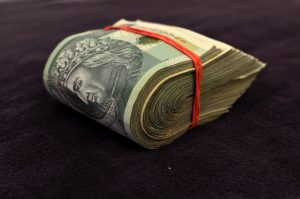Calculating risk to reward ratio is an essential part of forex trading. It is the cornerstone of a sound trading strategy as it helps traders to measure the potential profits against the potential losses of a trade. Risk to reward ratio provides traders with a clear idea of the balance between risk and reward in a trade. It is a crucial metric that helps traders to determine whether a trade is worth taking or not. In this article, we will take a detailed look at how to calculate the risk to reward ratio in forex.
What is Risk to Reward Ratio?
Risk to reward ratio is a measure of the potential profit of a trade in relation to its potential loss. It is the ratio of the amount a trader stands to lose if the trade goes against them, to the amount they stand to gain if the trade goes in their favor. The risk to reward ratio is usually expressed as a ratio of 1:2 or 1:3, which means that for every dollar of risk, the trader expects to make two or three dollars of profit, respectively.
Why is Risk to Reward Ratio Important?
Risk to reward ratio is essential as it helps traders to manage their risk and rewards. By calculating the risk to reward ratio, traders can determine the potential profitability of a trade and ensure that they only take trades that have a favorable risk to reward ratio. It is vital to ensure that the potential reward justifies the risk taken in a trade. A favorable risk to reward ratio helps traders to minimize their losses and maximize their profits.
How to Calculate Risk to Reward Ratio?
Calculating risk to reward ratio is a simple process. The formula for calculating the risk to reward ratio is as follows:
Risk to Reward Ratio = (Stop Loss – Entry Price) / (Take Profit – Entry Price)
Let’s take an example to understand how to calculate the risk to reward ratio. Suppose a trader wants to buy EUR/USD at 1.2000 and sets a stop loss at 1.1950, and a take profit at 1.2150. The risk to reward ratio for this trade would be:
Risk to Reward Ratio = (1.1950 – 1.2000) / (1.2150 – 1.2000)
Risk to Reward Ratio = -50 / 150
Risk to Reward Ratio = 1:3
In this example, the risk to reward ratio is 1:3, which means that the trader is risking one dollar to make three dollars of profit.
Factors that Affect Risk to Reward Ratio
Several factors can affect the risk to reward ratio in forex trading. Some of these factors are:
1. Market Volatility: Market volatility can affect the risk to reward ratio as it can increase the potential profit or loss of a trade. In volatile markets, traders need to adjust their stop loss and take profit levels accordingly to ensure they have a favorable risk to reward ratio.
2. Trading Strategy: The trading strategy used by traders can affect the risk to reward ratio. Some trading strategies have a higher risk to reward ratio, while others have a lower risk to reward ratio. It is important to choose a trading strategy that provides a favorable risk to reward ratio.
3. Timeframe: The timeframe used by traders can also affect the risk to reward ratio. Traders need to adjust their stop loss and take profit levels according to the timeframe they are trading in to ensure they have a favorable risk to reward ratio.
Conclusion
Calculating risk to reward ratio is a crucial part of forex trading. It helps traders to manage their risk and rewards and ensures that they only take trades with a favorable risk to reward ratio. By calculating the risk to reward ratio, traders can determine the potential profitability of a trade and adjust their stop loss and take profit levels accordingly. It is important to remember that the risk to reward ratio is not the only metric that traders need to consider when taking a trade. Traders need to combine the risk to reward ratio with other technical and fundamental indicators to make informed trading decisions.





